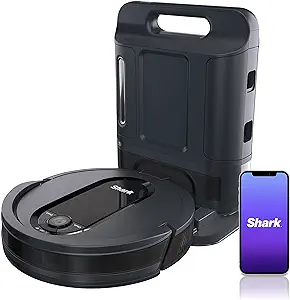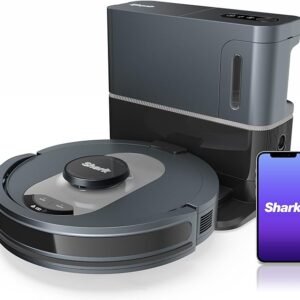Description
Introduction to the WiFi-Connected Robot Vacuum
In today’s fast-paced world, the WiFi-connected Robot Vacuum emerges as a valuable asset for home maintenance. This innovative cleaning device seamlessly integrates advanced technology with convenience, offering users a blend of functionality and ease. A key feature of this robot vacuum is its WiFi connectivity, allowing users to control and monitor the vacuum through a dedicated smartphone app. This feature not only enhances user convenience but also ensures that cleaning tasks can be managed remotely, even when away from home.
The robot vacuum boasts an impressive 120-minute runtime, a significant factor that enhances its efficiency. With this extended duration, the vacuum is capable of covering extensive floor areas without necessitating frequent recharging. This ensures more thorough cleaning sessions and minimizes interruptions, making it suitable for larger homes or offices.
At the core of the robot vacuum’s cleaning capability lies its tri-brush system. This system is designed to tackle various surface types with ease, ensuring comprehensive dirt and debris removal from carpets, hardwood floors, tiles, and more. The tri-brush configuration works in harmony, optimizing the vacuum’s performance by effectively dislodging and capturing dirt from every nook and cranny.
As we delve deeper into subsequent sections, we will examine these features in greater detail, exploring how each aspect contributes to making the WiFi-connected robot vacuum a practical and efficient solution for modern cleaning needs.
“`
In-Depth Look at the Tri-Brush System and Multi-Surface Cleaning
The tri-brush system embedded in the wifi-connected robot vacuum stands as a significant advancement in household cleaning technology. This innovative system incorporates three distinct brushes, each playing a crucial role in achieving a comprehensive cleaning performance. The combination includes two side brushes and a primary brush, meticulously designed to address the challenges of multi-surface cleaning.
The side brushes are specifically tailored for edge and corner cleaning. Their strategic placement and targeted motion allow them to sweep dirt, dust, and debris from the hard-to-reach areas along baseboards and furniture legs, drawing it all into the path of the main brush. The primary brush, wider and more robust, is engineered to handle bulk cleaning duties across the broader surfaces. It efficiently captures larger debris while simultaneously agitating carpets to extract embedded dirt.
One of the standout features of this robot vacuum is its adaptability across various flooring types, including hardwood, carpets, and tiles. The brush system demonstrates exceptional versatility, seamlessly transitioning from one surface to another without compromising on cleaning quality. On hardwood and tiled surfaces, the brushes delicately sweep and vacuum, preventing scratches while ensuring a thorough clean. Conversely, on carpets, the main brush employs a more vigorous scrubbing action to lift and remove deep-seated dirt and pet hair.
Real-world scenarios further illustrate the efficacy of the tri-brush system. For instance, in a home with both hardwood floors and area rugs, the vacuum skillfully navigates and switches its cleaning approach accordingly. It captures crumbs from the kitchen tiles with the same efficiency as it picks up pet hair from the living room carpet, thereby maintaining a consistently clean household environment.
To maintain the optimal performance and longevity of the tri-brush system, regular maintenance is essential. Periodic cleaning of the brushes, particularly removing hair and tangled fibers, ensures they remain effective. Replacing the brushes as per the manufacturer’s guidelines also plays a critical role in sustaining the vacuum’s impeccable cleaning performance over time.





Reviews
There are no reviews yet.